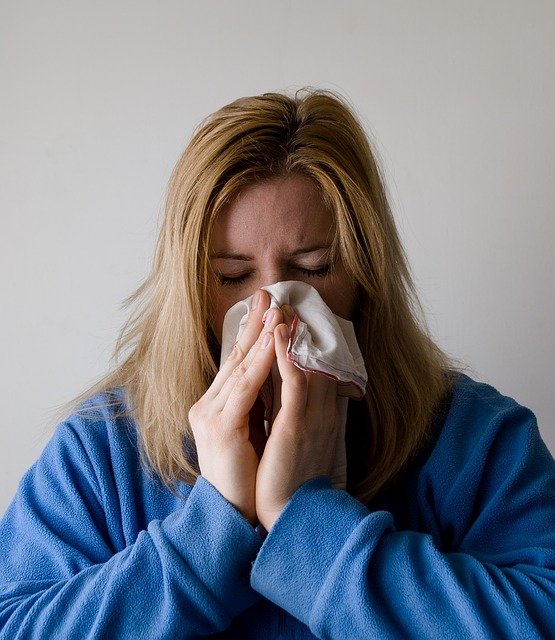
by Tanya Keam | Jan 14, 2022 | Acupuncture, Chinese medicine, Cough, covid19, Food, Immune Support, Immune system, Nambour, Nourishing, Seasonal living, Sunshine coast, Winter
Immune System treatment with Chinese Medicine
Immune system Chinese Medicine and Western medicine treatment approaches are quite different from each other.
When a virus enters the nose and throat, our immune system has receptors that tell the body there is an ‘invasion’, so the body sends helpers to ‘defend’ the body at the sight of infection, so we feel a sore throat come on for example. The immune system can often fight off an infection on its own, other times other invention may be needed.
The treatment for treating a common cold or flu from a western medicine perspective may include pharmaceutical use such as ibropofen to drop a fever, panadol for a headache, your doctor may advise rest and fluids to keep you hydrated. Elderly people are often given a flu shot in Autumn so they can build some antibodies to at least some of the inlfuenza variants in time for when Winter comes around and flu’s are more common.
The treatment for treating a common cold or flu or anything else viral from a Chinese medicine or eastern medicine perspective includes first understanding the onset. One person may come down with a sore throat and headache, another may feel lethargic, stuffy nose and feverish – even with the same variant of virus. The persons’ general health and medical history is also taken into account. For example if someone has chronic asthma but exercises regularly and eats a well balanced diet, compared to someone who is diabetic, obese and may be on multiple medications – they are completely different health status’s and their immune system response to a virus may be vastly different.
Herbal medicine is used at the first onset of symptoms for a virus which presents with flu symptoms and diagnosed usually with 3 seperate clinical presentations:
- Wind cold – runny nose, sneezing, some mucous congestion, fatigue, maybe a slight cough. There are no ‘hot’ symptoms and often happen if we just get caught in the rain or when the winds pick up in Autumn in the southern hemisphere.
- Wind heat – sore throat, swollen glands, headache, fever, achy muscles, lethargy, rapid heart rate and a yellow tongue coating. These are hot symptoms and often we catch this type of pathogen from someone else. Wind cold can sometimes turn into a wind heat pattern if the immune system has a hard time recovering. The mucous will go from clear to white to yellow to green and the fever etc kick in to further fight off the now hotter pathogen.
- Toxic heat and/or with phlegm – this type of condition is when wind heat isn’t resolved and a person gets more sick. They may end up with a lung infection with green or blood streaked sputum or have phlegm in their digestive system which leads to loose or sticky stools as well as lung phlegm that is hard to expectorate.
Depending on the persons constitution, herbal medicine is given as soon as symptoms come on. If you can get herbs into you within the first 12 hrs of a sore throat coming on (a wind heat pathogen for example), the herbs vent, disperse the expel the virus outwards preventing it from going deeper (aches, fever, then going to the chest then do not occur). As well as hydration, a healthy diet and rest. If however a pathogen lingers and nasty cough sticks arounds for weeks, a whole different approach is needed now as not only does the pathogen need to vent but the persons immune system needs some serious support!
Nutrition is a key part in anything cold/flu. Wind heat patterns already have so much heat in the body with fever, sore throats and aches going on we don’t want to add fire to fire so avoiding heating foods such as spicy, chocolate or coffee which create further heat is not recommended. But watermelon which is very cooling on the body also soothes a sore throat. Bonus! When a lot of mucous is present, it is not recommended to consume foods while sick that create more mucous in the body. These include dairy products and foods that have the texture of mashed avocado, peanut butter or bananas – they have ‘sticky’ consistency which is exactly what phlegm is. Whereas as a wind cold presentation would benefit from some spices such as chai tea which have dispersing and slightly warming qualities to balance out that cold invasion. it is a simple balance of cold balances hot, hot balances cold and avoiding those sticky ‘damp’ kind of phlegm foods when you have a chesty cough.
Traditional Chinese medicine consists of multiple facets to healing including acupuncture, cupping and gua sha therapy, massage, herbal medicine, exercise, nutrition and lifestyle recommendations to keep people well and as a way of preventative medicine. The lung energy is very much associated with the immune system so doing exercises that strengthen the lungs such as swimming, yoga, breath work and running build that lung capacity and ‘chi’ (energy). Someone who has Asthma would really benefit from swimming to strengthen the lungs and with the bonus of outside exercise you get Vitamin D too. Many minerals and vitamins found in our foods also support the immune system which is well researched, so eating a well balanced diet with lots of fruit and veggies is looking after you!
Allowing fevers to break on their own (without always reaching for the Ibuprofen) is a good sign your immune system is fighting off an infection. Further intervention is rarely needed when a fever gets high, but shouldn’t be disregarded either as a high fever can cause further illness. Getting a cold or flu every now and then is okay as well as your body creates antibodies to further protect itself for future attacks. Common herbs to strengthen the immune system in Chinese medicine are Huang Qi (Astragalus), Lingzhi (Reishi mushroom) and Bai zhu (Atractylodis Macrocephalae) which can be taken through the cold flu season to boost the immune system.
Here is a simple recipe to help a lingering cough!
If you’d like support in balancing your body and immune system Chinese medicine style then book in for a consult and treatment and we will get your system in great shape! You can book online or contact us at our Sunshine Coast Acupuncture and Chinese Medicine Clinic in Nambour on the beautiful Sunshine Coast.
 Hi, I’m Tanya, an AHPRA registered Acupuncturist, bodyworker and doctor of Chinese medicine in Nambour in the Sunshine Coast hinterland, Queensland Australia. I practice Chinese and natural medicine because its safe, logical, relevant and has effectively shown methods of natural wellness for thousands of years (read more about my training here). Life doesn’t need to be complicated and nor does the treatment approaches to get people feeling vibrant and well. I’ve seen people gain a lot from treatments, much more than just alleviating symptoms. It’s exciting to connect with people and share deep wisdom from the classics of ancient and traditional medicine, with modern protocols for todays mind-body living. See you in the clinic !
Hi, I’m Tanya, an AHPRA registered Acupuncturist, bodyworker and doctor of Chinese medicine in Nambour in the Sunshine Coast hinterland, Queensland Australia. I practice Chinese and natural medicine because its safe, logical, relevant and has effectively shown methods of natural wellness for thousands of years (read more about my training here). Life doesn’t need to be complicated and nor does the treatment approaches to get people feeling vibrant and well. I’ve seen people gain a lot from treatments, much more than just alleviating symptoms. It’s exciting to connect with people and share deep wisdom from the classics of ancient and traditional medicine, with modern protocols for todays mind-body living. See you in the clinic !
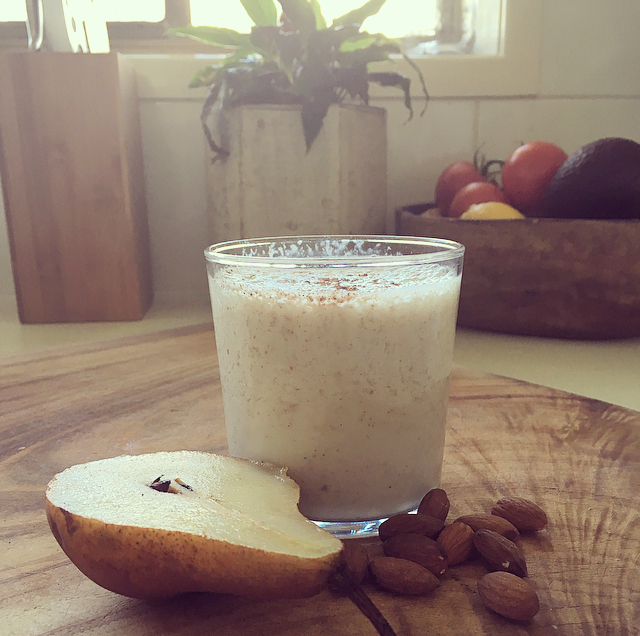
by Tanya Keam | Jun 11, 2018 | Acupuncture, Chinese medicine, Client information, Cough, Dairy alternatives, Dairy free, DIY Wellness Tips, Food, Herbal remedies, Homemade, Immune Support, Immune system, Nambour, Nutrition, Recipes, Seasonal living, Smoothie, Sunshine coast, Vegan, Vegetarian, Wellness, Winter
A simple Chinese Medicine cough recipe
Chinese medicine is seasonal medicine – what better way to take care of yourself than a cough recipe to look after you this season. In Winter it is recommended to consume less cold and raw food as it harsh on our digestive system to process, which is a balmy 36.5 degrees inside. Putting something the temperature of the fridge in a nice warm coldren stomach, first takes energy to warm it before it can digest it. This can lead to fatigue, bloating, and loose bowel movements.
In late Autumn and Winter we opt for:
- More warming foods such as soups and stews to warm us up from the inside!
- Smoothies are generally not recommended in Winter at all as they are too cold. However putting a wonderful twist on the conventional fruit smoothie so that is warming not only for our digestive system but designed to benefit the lungs and relieve coughs.
The main ingredient, pears, is highly valued in Chinese medicine as the fruit that is most beneficial for coughs. What does Autumn and Winter bring? You guessed it, coughs!
Pears are “sweet, slightly sour, and cool.” They “generate fluids” but also “dissolve phlegm,” so they are ideal for treating dry coughs, a hoarse voice, thirst and agitation in general.
Our second key ingredient is almonds which is also a great dairy alternative in smoothies. Almonds have similar properties to apricots in Chinese medicine, with apricot seeds being used as one of the key medicinals for treating coughs. Almonds are not as potent as apricot seeds (which have some mild toxicity and shouldn’t be consumed on a regular basis), but they do have some similar properties – moistening the lungs, relieving coughing and wheezing. That makes them the perfect complement to pears in this smoothie.
This recipe is specific for almond milk which helps resolve phlegm, so don’t switch it up for dairy milk as dairy is more phlegm forming.
Chinese Medicine Cough Recipe (Spiced Pear Smoothie with Almonds and Chia)
Serving size: About 1-2
Ideal for high speed blender
Ingredients
1 Pear (room temperature)
¾-1cup Almond Milk (how thick do you like it?)
10 natural Almonds (soaked overnight in water if possible, otherwise raw is fine)
¼-1/2 teaspoon Garam Masala spice
Dash Cayenne pepper or Cinnamon (to keep the digestive system warm)
1 tablespoon Chia Seed (can be soaked in almond milk prior for 15 minutes to turn into a jelly)
1-2 teaspoons Manuka honey
NO ICE !
Directions
Blend all ingredients until smooth. Enjoy!
Take care this Winter, there has already been many colds and influenza floating around.
 Hi, I’m Tanya, an Acupuncturist and Chinese medicine practitioner in Nambour on the Sunshine Coast, Queensland Australia. I practice Chinese medicine because its safe, logical, relevant and has effectively shown methods of natural wellness for thousands of years (read more about my training here). Life doesn’t need to be complicated and nor does the treatment approaches to get people feeling vibrant and well. I’ve seen people gain a lot from treatments, much more than just alleviating symptoms. It’s exciting to connect with people and share deep wisdom from the classics of ancient and traditional medicine, with modern protocols for todays mind-body living. See you in the clinic !
Hi, I’m Tanya, an Acupuncturist and Chinese medicine practitioner in Nambour on the Sunshine Coast, Queensland Australia. I practice Chinese medicine because its safe, logical, relevant and has effectively shown methods of natural wellness for thousands of years (read more about my training here). Life doesn’t need to be complicated and nor does the treatment approaches to get people feeling vibrant and well. I’ve seen people gain a lot from treatments, much more than just alleviating symptoms. It’s exciting to connect with people and share deep wisdom from the classics of ancient and traditional medicine, with modern protocols for todays mind-body living. See you in the clinic !
Contact me
Book online

by Tanya Keam | Jun 6, 2015 | Acupuncture, Buderim, Chinese medicine, Client information, Daily Rituals, DIY Wellness Tips, Mental health, Nature, Nourishing, Nutrition, Seasonal living, Sunshine coast, Winter
Chinese medicine gives us numerous mental, physical and nutritional tools to help us maintain balance all year round. There is much focus around the seasons of the year, where each of our organs are associated with each season. Winter is of the Kidneys and Bladder which rule water metabolism and maintaining homeostasis, a dynamic continual rebalancing. Winter is also the most ‘yin’ time of the year – yin is dark, cold, slow, with inward energy, compared to Summer which is light, hot, quick, with expansive qualities.
Some people feel quite energised by Winter, going snowboarding and being out in the chilly weather bush walking. While others retract, stay inside and can feel low in mood from the lack of light and physical activity.
Imbalances that can occur during the winter months include:
- Lower back pain – chronic or acute
- Knee pain and weakness
- Urinary retention or frequent urination
- Fatigue and shortness of breath
- Vertigo or dizziness
- Sexual problems – vaginal dryness, premature ejaculation, low libido
- Anxiety, low mood and excessive fear
- High blood pressure and/or headaches
- Inflexibility and resistance to change
Foods that are beneficial during the Winter months include:
Root vegetables, winter greens, mushroom, apple, pear, potato, squash, citrus fruits, kidney bean, black sesame seed, dark leafy greens, chicken, lamb, tempeh, whole grains, miso, unrefined sea salt, bone broths (organic).
Chinese medicine dietetic philosophy suggests that we embrace native foods, locally grown, and organic and/or chemical free where possible. Take time to sit down and enjoy your meal.
Tips to stay well this Winter:
- Take time to listen to your body and recharge
- Eat warming foods such as lamb and root vegetable stew, tempeh with leafy greens, miso soup or a kidney bean dish
- Keep hydrated with neutral temperature water and warming teas
- Keep warm – especially the upper back, neck and lower back
- Practice self acceptance – acknowledge emotions (such as fear), reflect, judge yourself less so that you can move forward (Spring is followed by Winter – the season that bursts with life)
- Don’t be afraid of your darker side – write things down in a journal without analysing
- Receive acupuncture to support the Kidneys and Bladder and maintain wellness
Exercise wise, we all do less during the cooler months as it is a time to rest and revitalise our kidneys, which is why some animals hibernate. Nature is at rest, and in this rest replenishes itself.
By eating well, regular exercise, paying attention to our bodies and harmonising ourselves to the seasons, we can stay healthier and prevent illness. Once we feel good and are maintaining a level of wellness that we all strive for, it allows us to enjoy the cooler months, whether its indoors or hitting the waves (with a wetsuit!). Thus, Winter is the perfect time to look inward, reflect on ourselves, practice writing or other practices such as yoga, pilates or tai chi.
Take care of you, see you in the clinic,
TK xx
Tanya Keam Wellness is an experienced health clinic on the Sunshine Coast. Helping you to feel better in all aspects of your health and wellbeing.
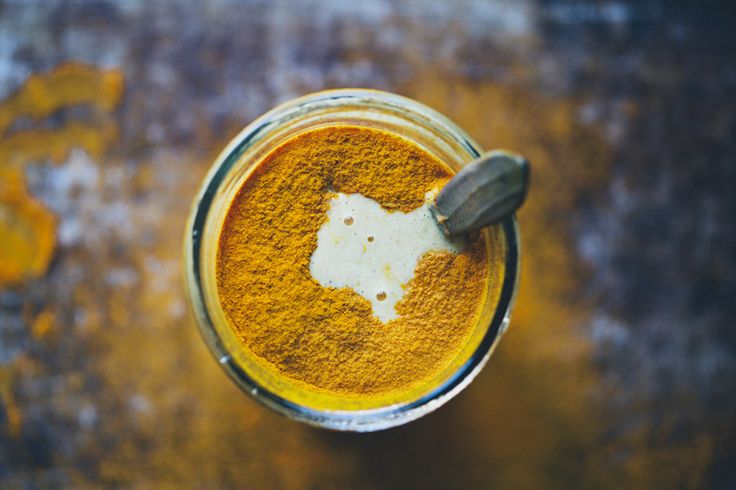
by Tanya Keam | Feb 4, 2015 | Autumn, Chinese medicine, Client information, DIY Wellness Tips, Food, Herbal remedies, Homemade, Immune Support, Immune system, Liver Health, Nourishing, Nutrition, Recipes, Seasonal living, Sunshine coast, Wellness, Winter
Immune Boosting Tumeric Lassi
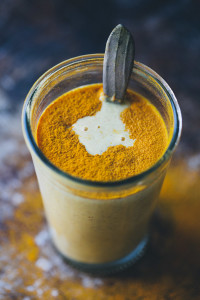
The Benefits of Tumeric
1. Otherwise known as Circuma longa, is a member of the ginger family, Zingaberaceae.
2. A wonderful aspect on the liver. Spring (and late winter) is an important time to consume herbs and foods that strengthen the liver, because spring is the season which rules the liver and gallbladder in Traditional Chinese Medicine. It is said to shrink engorged hepatic ducts, so it can be useful to treat liver conditions such as hepatitis, cirrhosis, and jaundice.
2. Highly valuable for the influence it exerts on the digestive system and the liver. In both Ayurvedic and Traditional Chinese Medicine, it is considered a digestive bitter and a carminative. It can be incorporated into foods, including rice and bean dishes, to improve digestion and reduce gas and bloating. It is a cholagogue, stimulating bile production in the liver and encouraging excretion of bile via the gallbladder. This improves the body’s ability to digest fats.
3. Recommended for chronic digestive weakness and/or congestion. It can be taken as a single extract or in the form of digestive bitters, which combine turmeric with other bitter and carminative herbs. Take either of these twenty minutes before meals, especially meals that are high in protein and/or fat. It is beneficial for people who feel tired after consuming meals or who experience gas and bloating.
4. Anti-inflammatory to the mucous membranes, which coat the throat, lungs, stomach and intestines. Turmeric decreases congestion and inflammation from stagnant mucous membranes. People with the following conditions could benefit from regular use of turmeric: IBS (Irritable Bowel Syndrome), colitis, Crohn’s disease, diarrhea, and post-giardia or post salmonella conditions. It can also reduce the itching and inflammation that accompanies hemorrhoids and anal fissures.
5. Useful to follow up antibiotic treatments, in addition to acidophilus and garlic. It helps to improve the intestinal flora and acts as an anti-bacterial.
6. Turmeric can also benefit skin conditions including: eczema, psoriasis and acne, for it is a potent detoxifier.
7. Turmeric is an antispasmodic to smooth muscles so it reduces digestive and menstrual cramping.
Try adding turmeric to your oatmeal, grains and beans, or take digestive bitters. Whatever way that turmeric is consumed it will benefit both the digestive system and the liver.
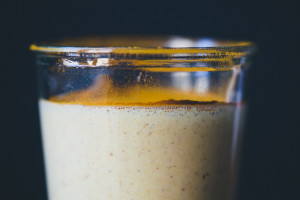
2 large or 4 small glasses
2 cups organic yogurt with active live culture, or dairy or nut milk
2 bananas
2 tsp freshly grated ginger
2 tsp honey, preferably raw (unpasteurized)
1/2 lemon, juice
2 tsp rosehip powder (optional but delicious, and a good C-vitamin boost)
1 tsp vanilla extract or ground vanilla
3-4 tsp ground turmeric (or fresh turmeric root)
Place all ingredients in a blender and mix on high speed until smooth. Add more yogurt if you prefer. Pour the lassi in two large glasses. For a more stunning presentation, dust 1 tsp ground turmeric on top before serving. Add a straw and serve.
Eat well, drink well, take care of you, see you in the clinic,
TK xx
Learn more > http://www.tanyakeamwellness.com

 Hi, I’m Tanya, an AHPRA registered Acupuncturist, bodyworker and doctor of Chinese medicine in Nambour in the Sunshine Coast hinterland, Queensland Australia. I practice Chinese and natural medicine because its safe, logical, relevant and has effectively shown methods of natural wellness for thousands of years (read more about my training here). Life doesn’t need to be complicated and nor does the treatment approaches to get people feeling vibrant and well. I’ve seen people gain a lot from treatments, much more than just alleviating symptoms. It’s exciting to connect with people and share deep wisdom from the classics of ancient and traditional medicine, with modern protocols for todays mind-body living. See you in the clinic !
Hi, I’m Tanya, an AHPRA registered Acupuncturist, bodyworker and doctor of Chinese medicine in Nambour in the Sunshine Coast hinterland, Queensland Australia. I practice Chinese and natural medicine because its safe, logical, relevant and has effectively shown methods of natural wellness for thousands of years (read more about my training here). Life doesn’t need to be complicated and nor does the treatment approaches to get people feeling vibrant and well. I’ve seen people gain a lot from treatments, much more than just alleviating symptoms. It’s exciting to connect with people and share deep wisdom from the classics of ancient and traditional medicine, with modern protocols for todays mind-body living. See you in the clinic ! 





